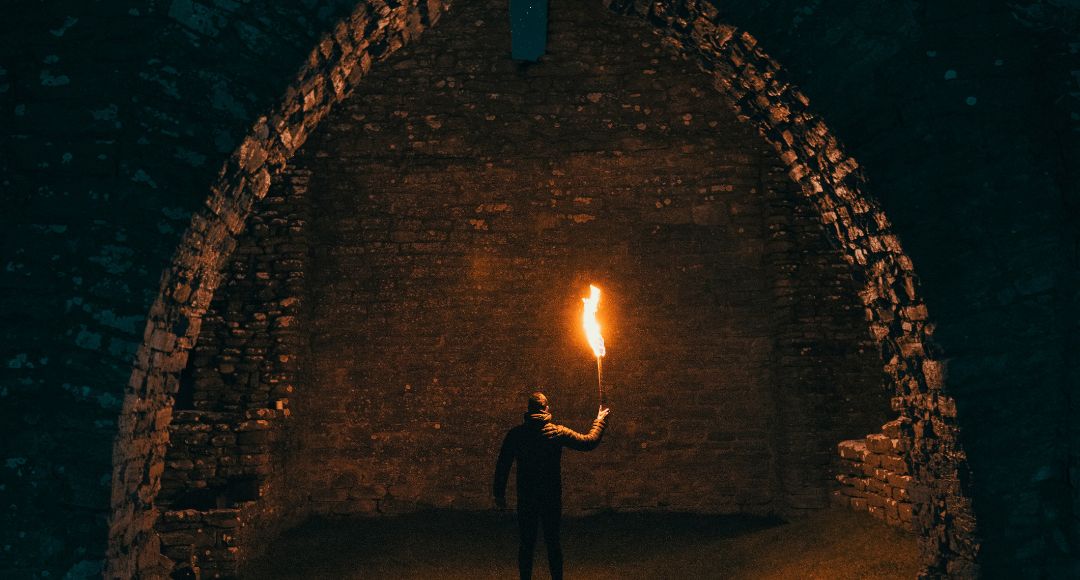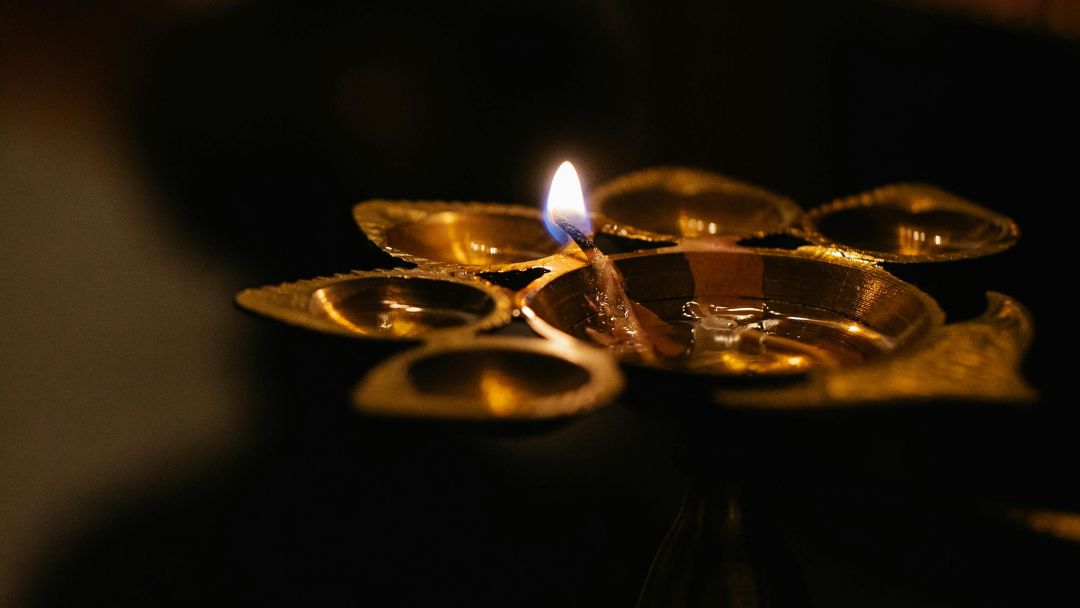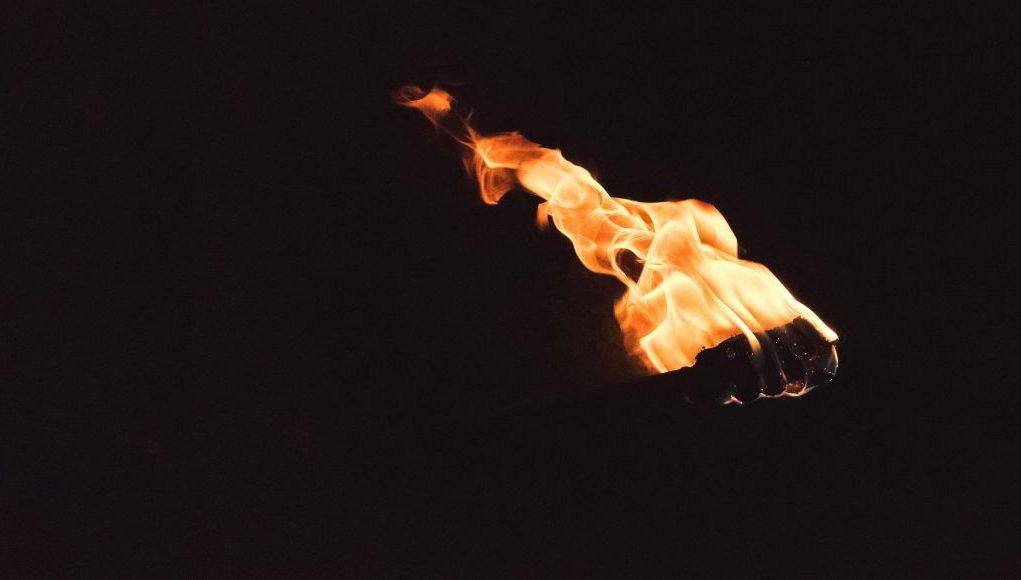Ever wondered if people, before the invention of the light bulb, ever had a “light bulb moment”? What did they call it? Did Thomas Edison have a “light bulb moment” when he invented the light bulb? How did our ancestors navigate life without light bulbs? How did ancient lighting methods influence the modern lights we see today?
If these questions also keep you up at night (like us), then you’ll finally be able to sleep soundly tonight. In this blog, we’re going to illuminate (pun very much intended) the fascinating world of early lighting. Expect a little history, a dash of danger, and a surprising amount of style inspiration from folks who were lighting it up long before Edison’s bright idea.
The Importance of Light in Early Civilisations
Long before the internet and toaster ovens, when early human civilisation huddled around fire, it was not for a TikTok dance but rather for warmth, safety, and—most crucially—light. When the sun dipped below the horizon, darkness wasn’t just inconvenient; it was full of threats. Wild animals, treacherous terrain, or the spiritual unknown—night meant danger, and light was survival.
After humans learned how to tame fire and carry it with them into the night, fire became a symbol of power and presence. In ancient temples, flickering flames lit altars and sanctuaries, adding to the mystery and reverence. In cities, the wealthy lit courtyards and feasts with oil lamps, while the poor made do with smoky torches.
Across the globe, humans have used fire as a source of light that extends the day, allowing for cooking, storytelling, and crafting.
Fire and Open Flame
Let’s go way back to where it started—fire, the OG of illumination.
The sad reality is that humans did not invent fire. Early humans observed and harnessed it from natural phenomena, such as lightning strikes and forest fires. Picture a few brave hunter-gatherers thinking, “Hey, this could be useful.” They eventually learned how to start it, and fire became humanity’s BFF (don’t even try to think about how many experienced burns before they realised fire was a dangerous force, as it was useful).
Open flames were used in campfires, hearths, and primitive torches. The torch was the equivalent of the light bulb in ancient times. It’s typically a stick dipped in flammable substances like resin, pitch, or animal fat, lit, and carried around to pierce the darkness that comes with the night. It dripped and smoked, but it got the job done.
In ancient Greece and Rome, torches were essential in ceremonies and funerals. Ever seen the Olympic torch relay? That’s a passed-down ancient Greek tradition, where fire symbolised purity and life, promoting peace, unity, and friendship.
Fire was also used as a beacon or signal—the ancient world’s version of long-distance messaging. Lighting beacon fires on top of mountains could mean war, a royal birth, or “The invaders are coming!” In summary, it served its purpose.

Oil Lamps in Ancient Egypt and Rome
So, a little bit of oil lamps history, as one of the early light sources of mankind. It’s not explicitly stated in history books, so don’t take our word for it, but oil lamps were the first mood lighting. Lighting in ancient Egypt/Rome both utilised oil lamps extensively, with varying materials and designs.
The ancient Egyptians were among the first to refine the design of oil lamps. These early lamps were often simple pottery bowls or stones filled with animal fat or plant oil, with a wick made from papyrus or flax. Some of these lamps, in true Egyptian fashion, were decorated with motifs or symbols. They weren’t lavender scented candles, but they lit up tombs, temples, and houses, especially in capitals like Thebes and Memphis.
By the time we get to Ancient Rome, oil lamps have evolved, and lighting has become an art form. Now, oil lamps were:
- Crafted from terracotta clay, bronze, or even glass
- Decorated with scenes of mythology, animals, or daily life
- Fuelled by olive oil—talk about luxurious!
To achieve extra brightness, some lamps had multiple nozzles. Others were suspended from chains or mounted in elaborate sconces. If you went to posh Roman villas, you could find entire rooms softly glowing with oil lamp light, like a cosy and relaxing spa day.
Limitations and Dangers of Early Light
While in modern times, a candlelight or dancing fire effect might seem cosy, relaxing, and inviting, lighting back in the ancient world wasn’t all ambience and elegance. In fact, in most cases, it was downright hazardous.
Fire Hazards
Lighting with fire back then was a fire brigade’s nightmare.
- Homes were made of wood, straw, or clay.
- Lighting was open flame.
Many ancient cities experienced devastating fires. Rome’s infamous Great Fire in AD 64? If you haven’t heard of it, it was a disastrous event that consumed the city in flames for six days. Though it was rumoured that Emperor Nero himself was the one who started it, no one knows for sure who or what the culprit was. But we have an eye on you, oil lamp!
Smoke and Soot
Back in the day, a smokeless fire would have been considered magic. Fire was always equal smoke. Torches and animal fat? Those were smoky affairs. Indoors, the soot blackened ceilings and made the rooms suffocating.
Fuel Problems
Early lighting relied on oil, wax, fat, or wood—all of which weren’t readily available in supermarkets and still needed to be sourced. Olive oil was precious (and expensive), while animal fat smelled rancid. Getting your home illuminated always had a significant trade-off.

How Ancient Lighting Influences Today’s Aesthetic
Alright, we’re finally connecting the dots here. Despite the smoke and singed eyebrows, ancient lighting left behind a lasting legacy that some might even call style goals. Today’s designers and DIY enthusiasts remain captivated by the warmth and texture of early lighting sources.
Oil Lamp Vibes
Modern oil lamps—especially those used in rustic or Mediterranean interiors—borrow heavily from Roman and Egyptian aesthetics. To achieve that “eternal feast under the stars” look, restaurants often use replica oil lamps or tealights in cut-out clay holders.
And as a bonus? Zero gladiators involved.
Torch-Inspired Fixtures
See those wall sconces in hotels? Those used to be torches—well, back in the day. Wall sconces that mimic torches are a big thing in medieval-style pubs, themed hotels, and fantasy film sets. These fixtures create directional, dramatic lighting perfect for moody spaces—or dungeons.
Flame Simulation
We just told you about the dangers of lighting a space with an open flame. Unless you want to start another Great Fire, you can opt to use modern LED lights that simulate the flicker of flame. These are ideal for capturing the cosy and relaxing (maybe even romantic?) ambience without the insurance risk.
Earthy, Low-Light Interiors
There’s a growing love for “low lighting” zones—rooms that feel cave-like, cosy, and meditative. This trend focuses on the minimal and intentional lighting, with shadows always playing on the walls.
Final Glow-Up
Lighting in the ancient world wasn’t just a statement or a symbol—it was a necessity and a survival tool. From primitive torches to delicately decorated oil lamps, early civilisations lit their way through the dark with creativity, craftsmanship, and maybe a few disasters here and there.
But while we no longer need to dip sticks in animal fat for an early morning bathroom run, something magical connects us with those ancient flames. And these modern lights serve as a reminder that we’ve come a long way in terms of lighting our homes.
To explore more of the history of lighting, check out The Evolution of Lighting – From Fire to LED Innovation













